
MongoDB CRUD operations in Python
November 6, 2023
MongoDB, a popular NoSQL database, is widely used in numerous applications due to its scalability and flexibility.
Python developers often interface with MongoDB using a package called pymongo. This guide will walk you through the basic CRUD (Create, Read, Update, Delete) operations in MongoDB using Python.
Prerequisites
- MongoDB installed on your system
- Python environment set up
- pymongo installed (
pip install pymongo)
1. Establishing a Connection
First, you need to connect to your MongoDB instance:
from pymongo import MongoClient # Connect to the default host and port client = MongoClient() # Alternatively, specify the host and port # client = MongoClient('localhost', 27017)
2. Database and Collection
MongoDB organizes data in databases and collections. Here's how to specify them:
# Choose a database (it will be created if it doesn’t exist) db = client.mydatabase # Choose a collection (similar to a table in relational databases) collection = db.mycollection
You could ship faster.
Imagine the time you'd save if you never had to build another internal tool, write a SQL report, or manage another admin panel again. Basedash is built by internal tool builders, for internal tool builders. Our mission is to change the way developers work, so you can focus on building your product.
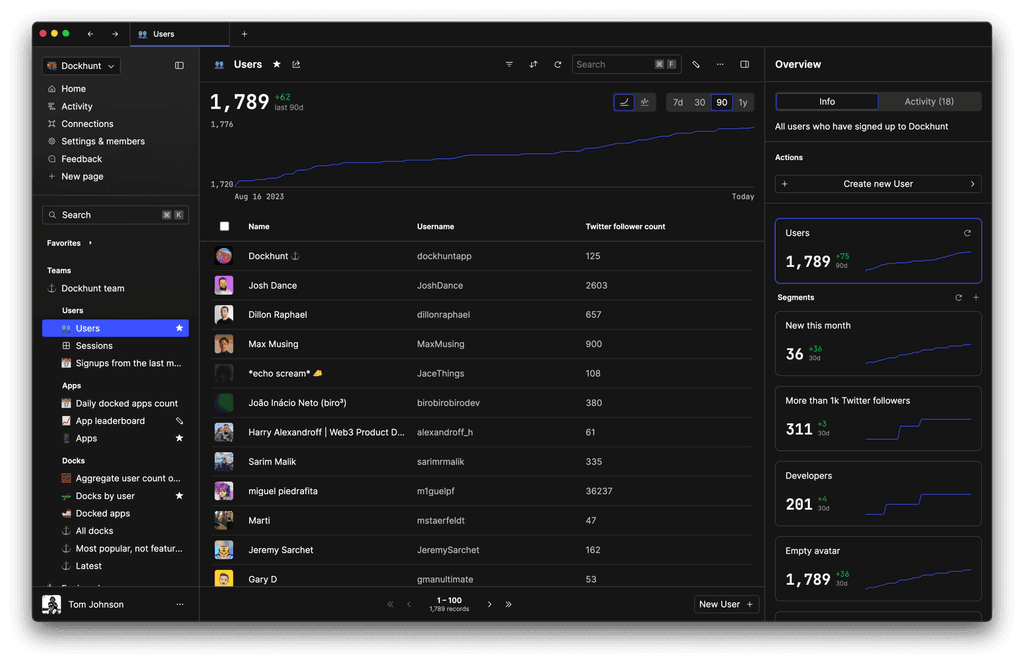
3. CRUD Operations
Create
To insert a document into a collection:
doc = {"name": "John", "age": 30, "city": "New York"} result = collection.insert_one(doc) print(result.inserted_id)
For multiple documents:
docs = [ {"name": "Anna", "age": 25, "city": "London"}, {"name": "Mike", "age": 32, "city": "San Francisco"} ] result = collection.insert_many(docs) print(result.inserted_ids)
Read
To retrieve one document:
# Find one document without any criteria result = collection.find_one() print(result) # Find one document with a criteria result = collection.find_one({"name": "John"}) print(result)
To retrieve multiple documents:
# Find all documents results = collection.find() # Find documents with criteria results = collection.find({"age": {"$gt": 30}}) for r in results: print(r)
Update
To update one document:
# Update the age of John criteria = {"name": "John"} new_values = {"$set": {"age": 31}} collection.update_one(criteria, new_values)
To update multiple documents:
# Increase age by 1 for all documents where age is less than 30 criteria = {"age": {"$lt": 30}} new_values = {"$inc": {"age": 1}} collection.update_many(criteria, new_values)
Delete
To delete one document:
# Delete a document with name John collection.delete_one({"name": "John"})
To delete multiple documents:
# Delete all documents where age is greater than 30 collection.delete_many({"age": {"$gt": 30}})
4. Closing the Connection
After performing your operations, it's good practice to close the connection:
client.close()
Conclusion
MongoDB CRUD operations in Python using pymongo are straightforward. This guide covers the basics to get you started. However, MongoDB offers more advanced features such as indexing, aggregation, and transactions, which are worth exploring as you dive deeper into MongoDB and Python development.
TOC
November 6, 2023
MongoDB, a popular NoSQL database, is widely used in numerous applications due to its scalability and flexibility.
Python developers often interface with MongoDB using a package called pymongo. This guide will walk you through the basic CRUD (Create, Read, Update, Delete) operations in MongoDB using Python.
Prerequisites
- MongoDB installed on your system
- Python environment set up
- pymongo installed (
pip install pymongo)
1. Establishing a Connection
First, you need to connect to your MongoDB instance:
from pymongo import MongoClient # Connect to the default host and port client = MongoClient() # Alternatively, specify the host and port # client = MongoClient('localhost', 27017)
2. Database and Collection
MongoDB organizes data in databases and collections. Here's how to specify them:
# Choose a database (it will be created if it doesn’t exist) db = client.mydatabase # Choose a collection (similar to a table in relational databases) collection = db.mycollection
You could ship faster.
Imagine the time you'd save if you never had to build another internal tool, write a SQL report, or manage another admin panel again. Basedash is built by internal tool builders, for internal tool builders. Our mission is to change the way developers work, so you can focus on building your product.

3. CRUD Operations
Create
To insert a document into a collection:
doc = {"name": "John", "age": 30, "city": "New York"} result = collection.insert_one(doc) print(result.inserted_id)
For multiple documents:
docs = [ {"name": "Anna", "age": 25, "city": "London"}, {"name": "Mike", "age": 32, "city": "San Francisco"} ] result = collection.insert_many(docs) print(result.inserted_ids)
Read
To retrieve one document:
# Find one document without any criteria result = collection.find_one() print(result) # Find one document with a criteria result = collection.find_one({"name": "John"}) print(result)
To retrieve multiple documents:
# Find all documents results = collection.find() # Find documents with criteria results = collection.find({"age": {"$gt": 30}}) for r in results: print(r)
Update
To update one document:
# Update the age of John criteria = {"name": "John"} new_values = {"$set": {"age": 31}} collection.update_one(criteria, new_values)
To update multiple documents:
# Increase age by 1 for all documents where age is less than 30 criteria = {"age": {"$lt": 30}} new_values = {"$inc": {"age": 1}} collection.update_many(criteria, new_values)
Delete
To delete one document:
# Delete a document with name John collection.delete_one({"name": "John"})
To delete multiple documents:
# Delete all documents where age is greater than 30 collection.delete_many({"age": {"$gt": 30}})
4. Closing the Connection
After performing your operations, it's good practice to close the connection:
client.close()
Conclusion
MongoDB CRUD operations in Python using pymongo are straightforward. This guide covers the basics to get you started. However, MongoDB offers more advanced features such as indexing, aggregation, and transactions, which are worth exploring as you dive deeper into MongoDB and Python development.
November 6, 2023
MongoDB, a popular NoSQL database, is widely used in numerous applications due to its scalability and flexibility.
Python developers often interface with MongoDB using a package called pymongo. This guide will walk you through the basic CRUD (Create, Read, Update, Delete) operations in MongoDB using Python.
Prerequisites
- MongoDB installed on your system
- Python environment set up
- pymongo installed (
pip install pymongo)
1. Establishing a Connection
First, you need to connect to your MongoDB instance:
from pymongo import MongoClient # Connect to the default host and port client = MongoClient() # Alternatively, specify the host and port # client = MongoClient('localhost', 27017)
2. Database and Collection
MongoDB organizes data in databases and collections. Here's how to specify them:
# Choose a database (it will be created if it doesn’t exist) db = client.mydatabase # Choose a collection (similar to a table in relational databases) collection = db.mycollection
You could ship faster.
Imagine the time you'd save if you never had to build another internal tool, write a SQL report, or manage another admin panel again. Basedash is built by internal tool builders, for internal tool builders. Our mission is to change the way developers work, so you can focus on building your product.

3. CRUD Operations
Create
To insert a document into a collection:
doc = {"name": "John", "age": 30, "city": "New York"} result = collection.insert_one(doc) print(result.inserted_id)
For multiple documents:
docs = [ {"name": "Anna", "age": 25, "city": "London"}, {"name": "Mike", "age": 32, "city": "San Francisco"} ] result = collection.insert_many(docs) print(result.inserted_ids)
Read
To retrieve one document:
# Find one document without any criteria result = collection.find_one() print(result) # Find one document with a criteria result = collection.find_one({"name": "John"}) print(result)
To retrieve multiple documents:
# Find all documents results = collection.find() # Find documents with criteria results = collection.find({"age": {"$gt": 30}}) for r in results: print(r)
Update
To update one document:
# Update the age of John criteria = {"name": "John"} new_values = {"$set": {"age": 31}} collection.update_one(criteria, new_values)
To update multiple documents:
# Increase age by 1 for all documents where age is less than 30 criteria = {"age": {"$lt": 30}} new_values = {"$inc": {"age": 1}} collection.update_many(criteria, new_values)
Delete
To delete one document:
# Delete a document with name John collection.delete_one({"name": "John"})
To delete multiple documents:
# Delete all documents where age is greater than 30 collection.delete_many({"age": {"$gt": 30}})
4. Closing the Connection
After performing your operations, it's good practice to close the connection:
client.close()
Conclusion
MongoDB CRUD operations in Python using pymongo are straightforward. This guide covers the basics to get you started. However, MongoDB offers more advanced features such as indexing, aggregation, and transactions, which are worth exploring as you dive deeper into MongoDB and Python development.
What is Basedash?
What is Basedash?
What is Basedash?
Ship faster, worry less with Basedash
Ship faster, worry less with Basedash
Ship faster, worry less with Basedash
You're busy enough with product work to be weighed down building, maintaining, scoping and developing internal apps and admin panels. Forget all of that, and give your team the admin panel that you don't have to build. Launch in less time than it takes to run a standup.
You're busy enough with product work to be weighed down building, maintaining, scoping and developing internal apps and admin panels. Forget all of that, and give your team the admin panel that you don't have to build. Launch in less time than it takes to run a standup.
You're busy enough with product work to be weighed down building, maintaining, scoping and developing internal apps and admin panels. Forget all of that, and give your team the admin panel that you don't have to build. Launch in less time than it takes to run a standup.
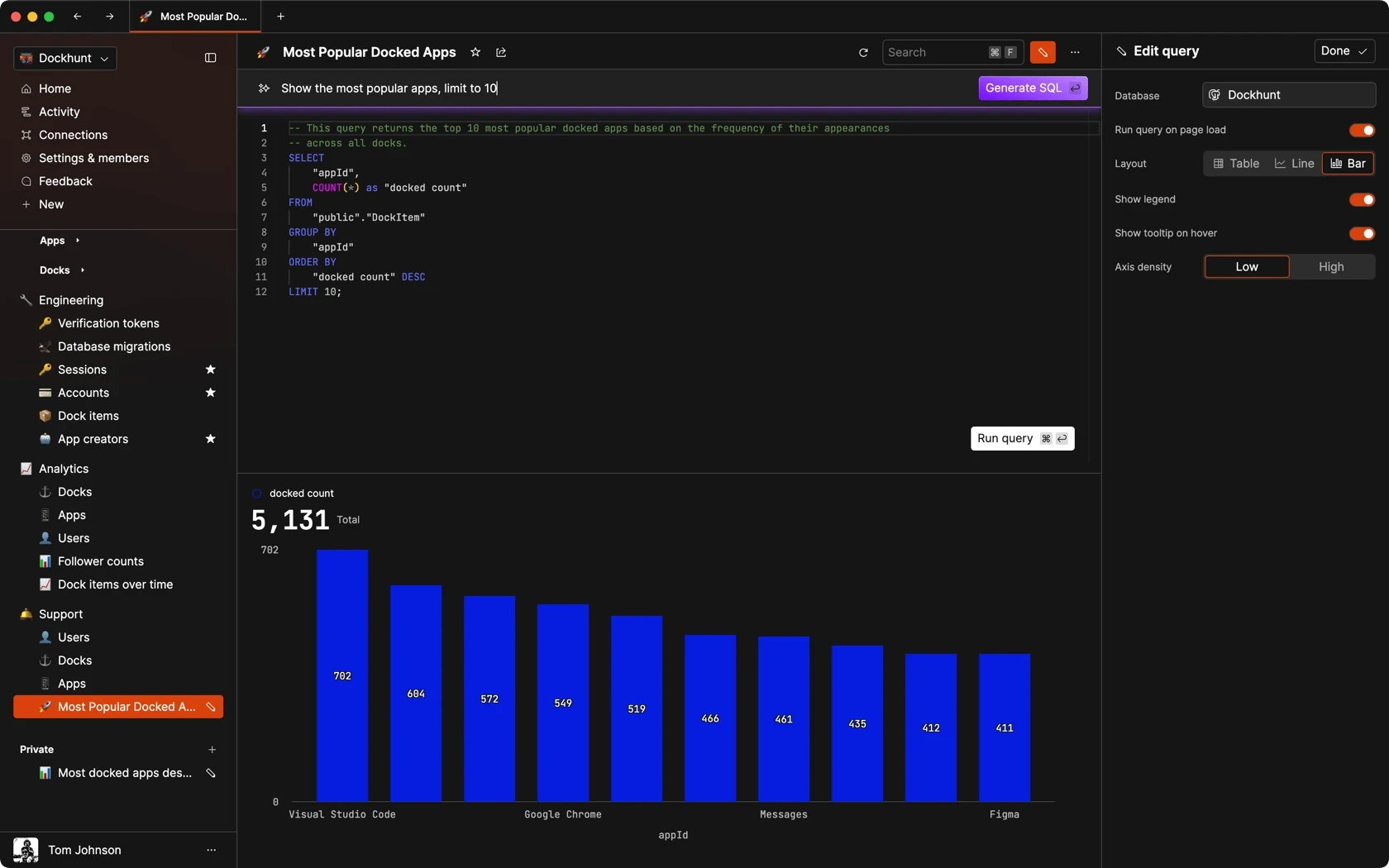
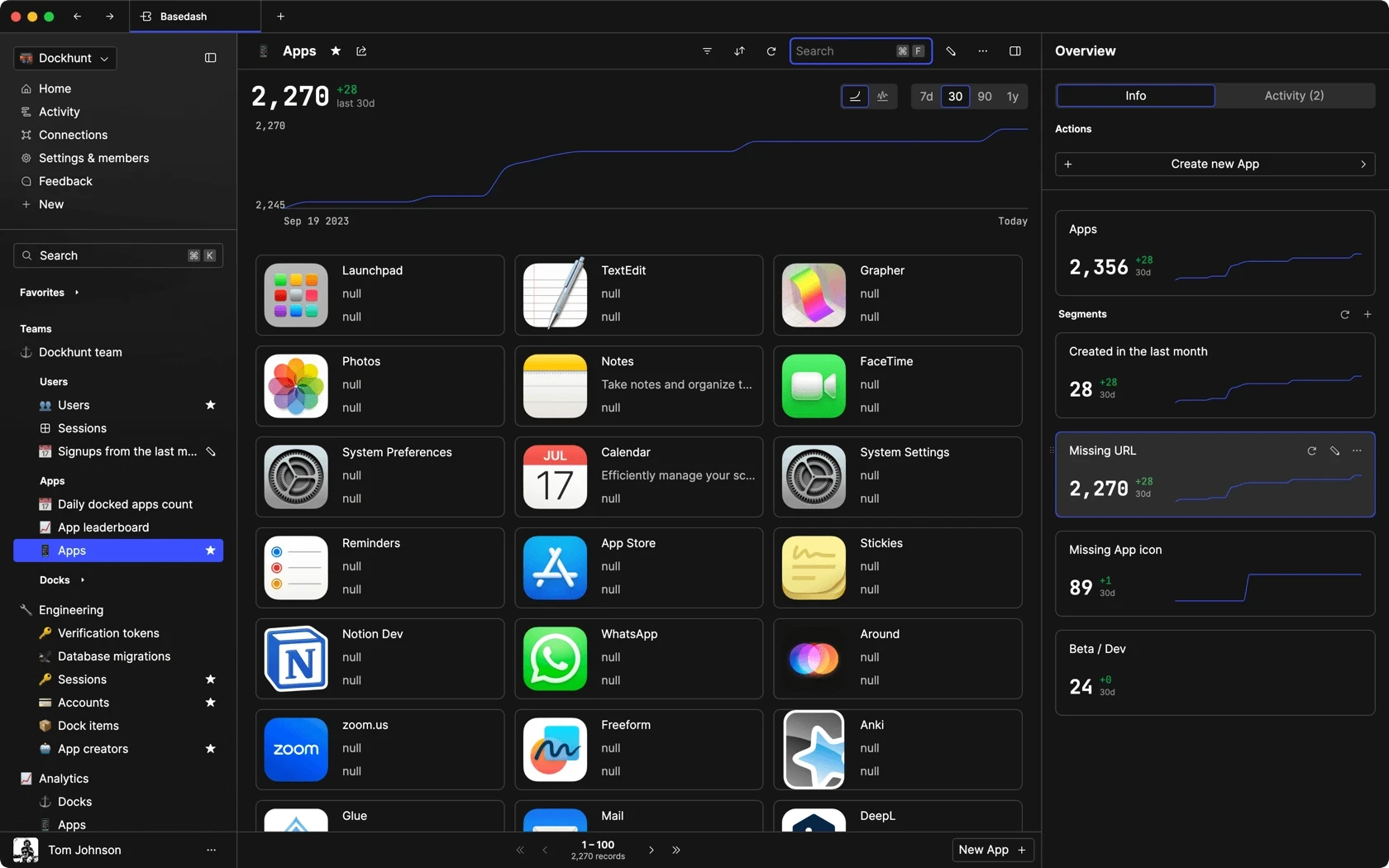
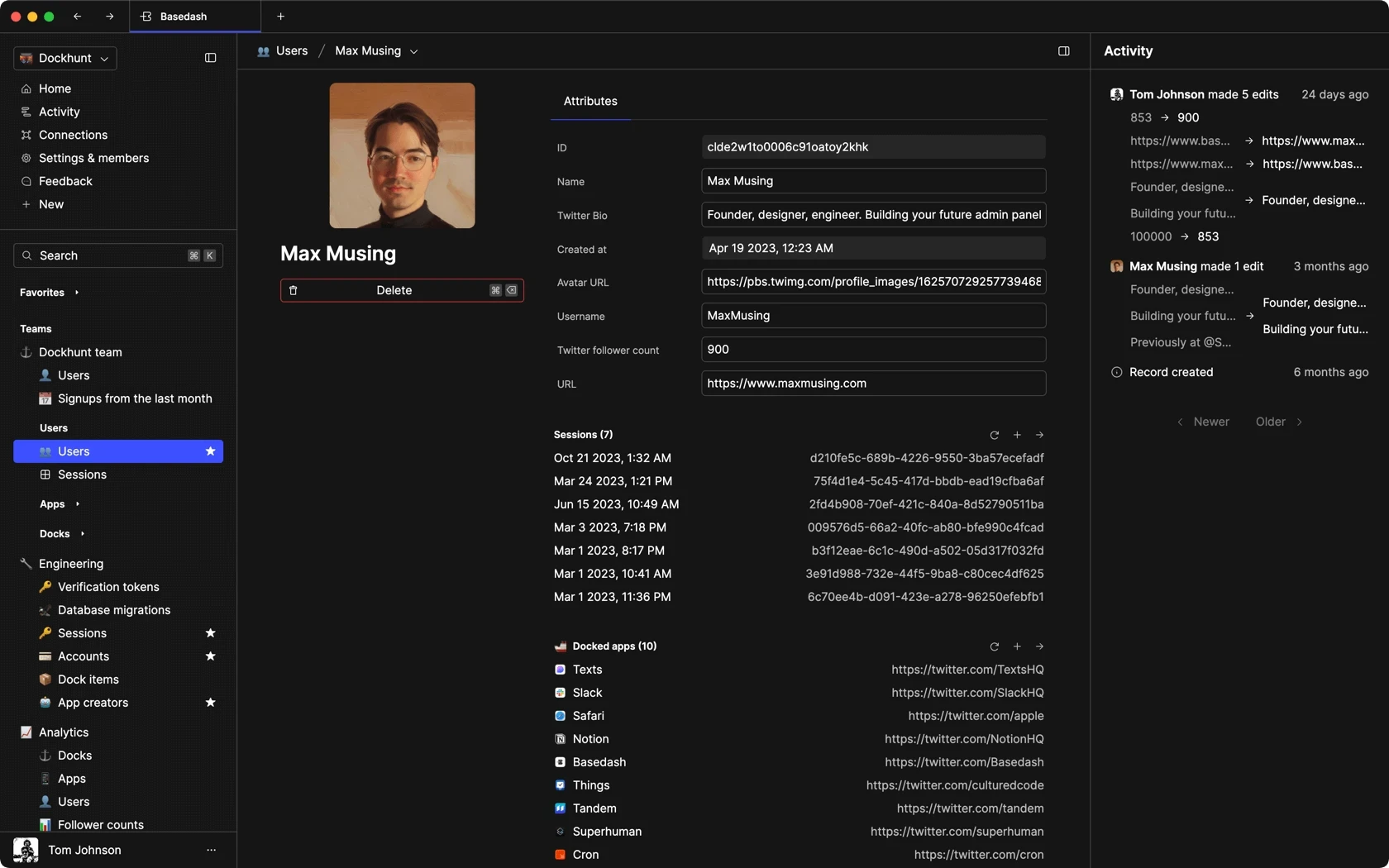
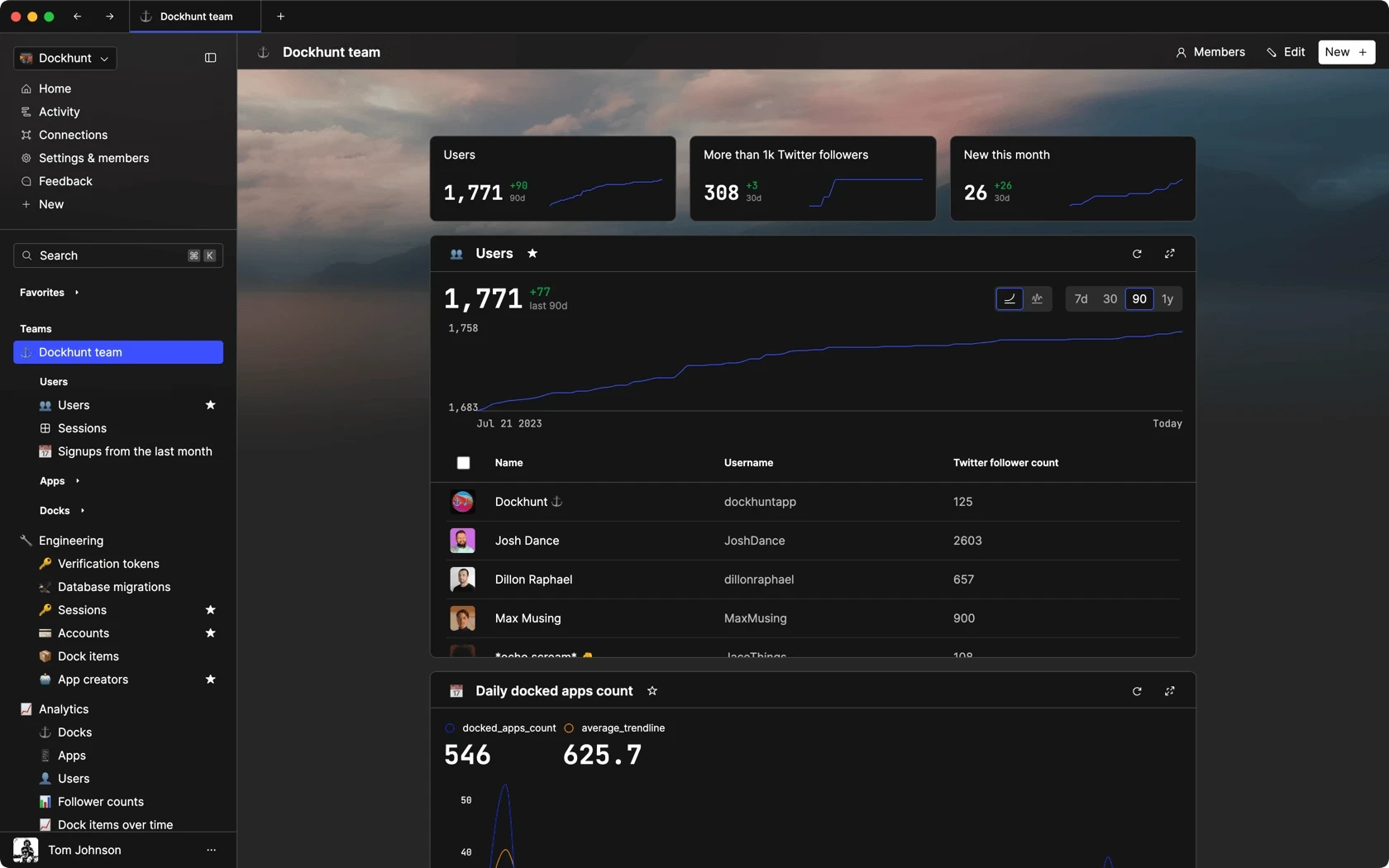
Dashboards and charts
Edit data, create records, oversee how your product is running without the need to build or manage custom software.
USER CRM
ADMIN PANEL
SQL COMPOSER WITH AI
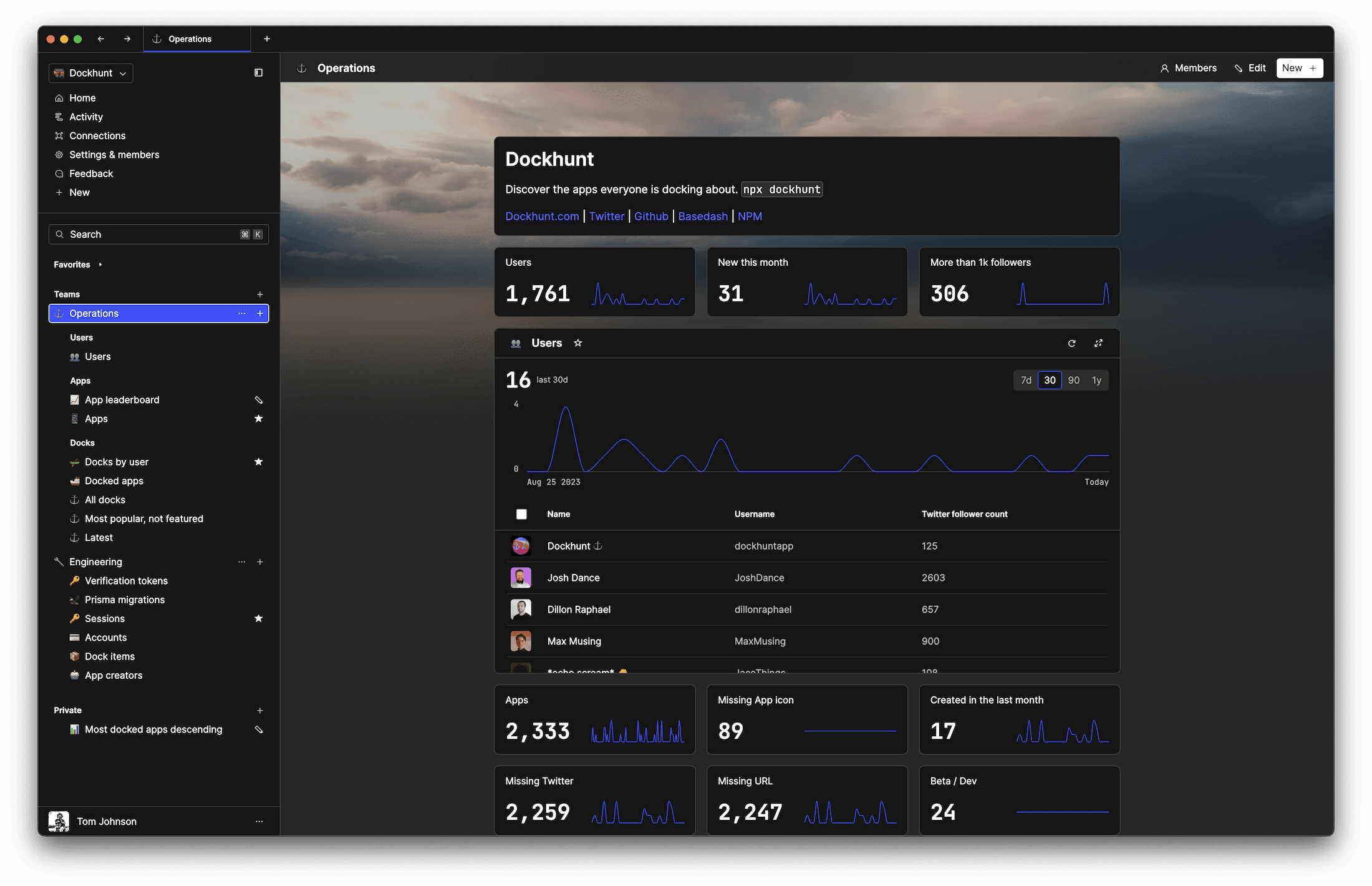
Related posts
Related posts
Related posts



How to Center a Table in HTML with CSS
Jeremy Sarchet



Adjusting HTML Table Column Width for Better Design
Robert Cooper



How to Link Multiple CSS Stylesheets in HTML
Robert Cooper



Mastering HTML Table Inline Styling: A Guide
Max Musing



HTML Multiple Style Attributes: A Quick Guide
Max Musing



How to Set HTML Table Width for Responsive Design
Max Musing
